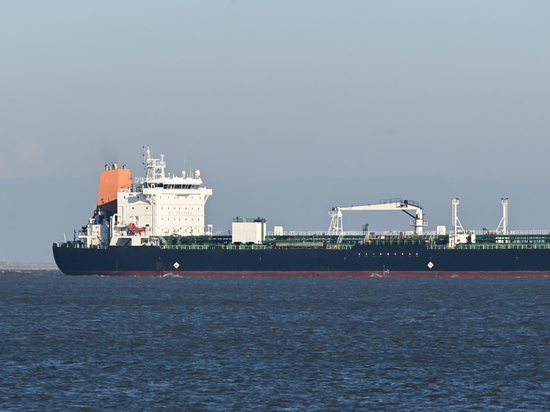The Russian “shadow fleet” has increased to frightening proportions: the expert explained the reasons
[ad_1]

Domestic energy resources are already being transported by 600 “gray” and “dark” tankers
The size of the “shadow” fleet, ready to facilitate the export of Russian oil, is approximately 600 ships, according to CNN. This is approximately 10% of the total world number of large tankers. American TV channel experts divide the naval armada accumulated by Moscow into “gray” and “dark” ships, which often turn off the automatic identification system, which makes it impossible to determine their dimensions and route of movement. It is practically impossible to prevent such schemes for the sale of “black gold”, since their detention by any international law enforcement agencies will be regarded as piracy.
“Gray ships”, according to CNN, are vessels sold by European owners last year to Middle Eastern and Asian firms. In turn, the “dark” tankers belong to Iranian and Venezuelan companies, which have been under Western sanctions for several years and have long learned to overcome restrictive obstacles. Every month, according to the American TV channel, Russia attracts from 25 to 35 vessels to its “shadow fleet”, thereby expanding the geography of export supplies of energy resources. To what extent this information is true and whether it is true that the Russian “shadow fleet” allows our country to successfully circumvent Western sanctions regarding domestic oil products, Igor Yushkov, an expert at the Financial University under the Government of the Russian Federation, told MK.
— In principle, how can a tanker officially transporting Russian oil be distinguished from a tanker from the “shadow” fleet?
– Ships that officially belong to Russian shipowners are included directly in the Russian fleet. International ship tracking systems such as MarineTraffic (a community providing information on the movement and current location of vehicles in harbors and ports – “MK”) show in real time the owner of the ship and what flag it flies. With regard to such ships, it is not difficult to find out the port of registry and the route of movement. Although domestic state-owned shipping companies do not always send their ships on raids under the Russian flag, it is often easy to understand who they belong to.
The calculation of the ships that make up the so-called “shadow fleet” is rather speculative. Tracking systems determine the total number of tankers involved in the transportation of oil at one time or another, and in fact, offhand, focusing only on the volumes of raw materials exported from our country, they estimate how much hydrocarbons fall on officially registered ships, and how much – on unknown ships.
— How does the “shadow” fleet work, and what is the difference between the “gray” fleet and the “dark” fleet that CNN mentions?
– This is the practice. Russian-owned tankers go to the open sea and transship oil on board ships with a large deadweight (total payload), from which our country created the “shadow fleet”. Large ships have been purchased in significant numbers because our new customers are in Asia, and transporting raw materials to this region takes three times as long as to Europe. Vessels that deliver oil to the final importer may not even call at Russian ports. These ships are registered in international maritime services and can be classified as a “grey” fleet.
Western regulators refer to the “dark” fleet ships that, for a number of technical reasons, cannot be controlled, including by satellite tracking systems. It is obvious that these tankers are most likely transporting Russian oil, but the routes and “citizenship” of the cargo remain formally unknown. In fact, in this case, the assessment is carried out “by eye”: the deadweight of Russian ships that sail with cargo in neutral sea waters is taken, summed up and divided by the estimated number of ships that are currently not officially involved in any oil transportation. As a result, the total composition of the Russian “shadow” flotilla is calculated. It turns out not very accurate, but from the outside the number itself – 600 ships – looks impressive and frightening for someone.
– What measures against the “gray” or “dark” fleet can be taken by European or American law enforcement agencies? Can, for example, detain, arrest or even confiscate the goods being transported, on the grounds that their sanctions are being violated?
– On the basis of what law can Western power structures interfere with the sea transportation of Russian oil? Sanctions were imposed on the price, as well as tanker insurance. The transportation of oil is not prohibited. Even if the owners of the tanker did not pass on information about the cost of transported oil to American or European authorities, preventing their movement on the high seas would be regarded as ordinary piracy. Of course, personal sanctions may be declared against such vessels or their owners: they will be banned, for example, from financial settlements in Western banks, and their property will be seized in Europe or the United States. But to detain the ships, at least an international resolution of some authoritative organization, such as the UN, is required. Without an appropriate document, the arrest of a tanker will be considered illegal, and any actions against it will be illegal.
[ad_2]
Source link






